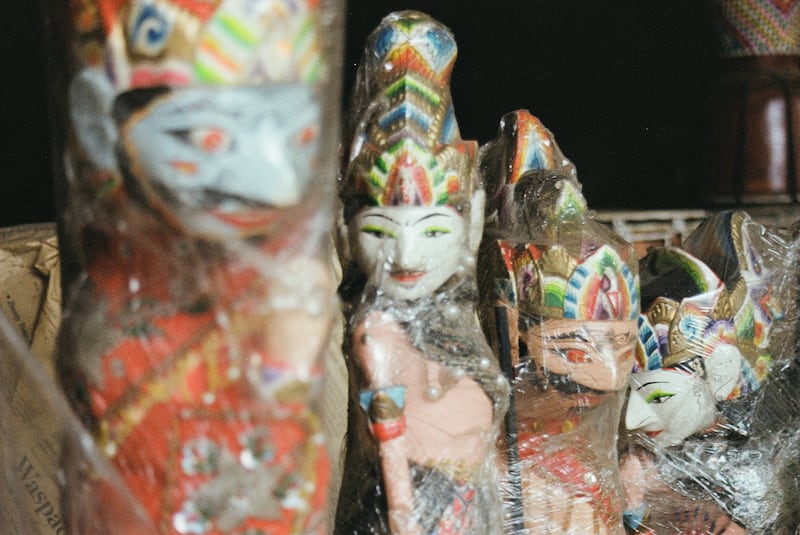In a Bali theatre, demons, warriors and deities dance behind a sheet, entertaining an audience of tourists more than 500 years after they supposedly helped change the course of Indonesia.
This is a Wayang shadow puppet play, one of the country's oldest and most revered performance arts.
Dating back 1,000 years, the art form is performed by manoeuvring leather or wooden puppets behind a backlit screen, while telling ancient Hindu and Islamic tales. Wayang is performed across Indonesia, with most tourists encountering it in Bali or Jakarta. While visiting the former, I found many wayang theatres, puppet-making workshops, museums and galleries celebrating this art form.

In Jakarta, I discovered similar offerings, including the large Wayang Museum. I came across this impressive facility while wandering Kota, the 17th-century capital of the Dutch, who controlled parts of Indonesia for three centuries. At Kota’s core is Fatahillah Square, a large plaza surrounded by graceful colonial buildings, including one housing the aforementioned museum.
Inside, I admired dozens of old Wayang puppets and read placards that explained their characters. Some depicted Hindu goddesses, others Islamic kings, warriors or poets. What fascinated me most about this art form, however, was the Javanese lore that states Wayang helped convert this nation from Hinduism to Islam.
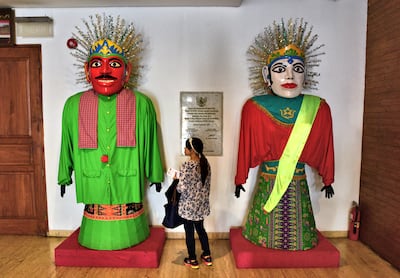
Indonesia is the world’s most populous Muslim nation.
There are more than 240 million people adhering to the religion across this vast archipelago – the largest country in Southeast Asia, stretching 5,100km from east to west.
Tourist-soaked Bali, famed for its rice fields, beaches and thousands of majestic Hindu temples, is reputedly the only Indonesian island that is not majority Muslim. The rest of Indonesia’s thousands of inhabited islands began slowly converting to Islam way back in the 1300s.
The spread accelerated in the following century partly, some historians believe, due to the influence of Muslim Chinese admiral and explorer Cheng Ho. The mariner left a large imprint in Southeast Asia from the many expeditions he led for China in the early 1400s.
At that time, a large chunk of Indonesia was controlled by the country’s biggest-ever empire, the Hindu-influenced Majapahit. Visitors to Bali can wander around physical remnants of this kingdom at temples such as Pura Besakih, Pura Maospahit, Pura Dasar and Pura Sada.
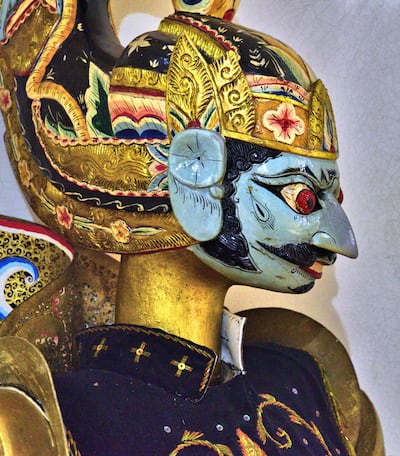
After a long period of dominance, Majapahit finally waned, says Adrian Vickers, professor of Southeast Asian Studies at the University of Sydney. “Majapahit faded in the late 1400s, and various Islamic kingdoms arose to become powerful in that same period,” Vickers adds.
Interested visitors can trace this power shift by heading to historic sites such as the magnificent Menara Kudus Mosque. Built in the mid-1500s in the Central Java city of Kudus, it dazzles visitors with its 20m-tall redbrick tower. The minaret was designed in the style of the Kukul watchtowers that guarded ancient Hindu temples in Indonesia.
“If you visit some of the earliest Islamic sites, such as the Menara at Kudus, you can see that the Muslim kingdoms took over a lot of the architecture and culture of Majapahit and merged it with their own beliefs and practices,” said Vickers.
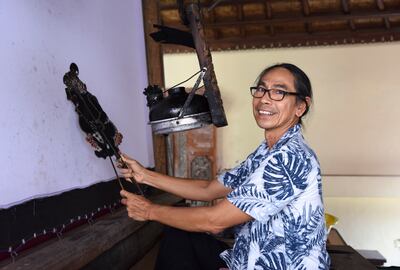
Curious tourists can also learn about Indonesia’s religious evolution via Wayang. Many historians believe shadow puppetry was likely imported from India to Indonesia more than 1,000 years ago, along with Hinduism. The performances drew their storylines from the Ramayana and Mahabharata Hindu epics of ancient India.
To make these dense tales easier for audiences to understand, the good characters are always on the right of the screen, and their evil rivals to the left. Over the past millennia wayang became splintered, with distinct versions performed in different regions.
Balinese shadow puppet theatres, for example, most commonly use wayang kulit, a flat leather puppet. As opposed to wayang klitik, a bulkier wooden puppet employed in many other parts of Indonesia. The variety of wayang styles is matched by diverging views on its influences.
In Bali, it is widely considered to have been honed by the Majapahit Hindu empire. Javanese lore, meanwhile, focuses on Wayang’s ties to nine Islamic saints, collectively known as the Wali Songo. In the 1400s, these men came from different countries to spread Islam in Indonesia, where Hinduism and Buddhism were then the chief religions.
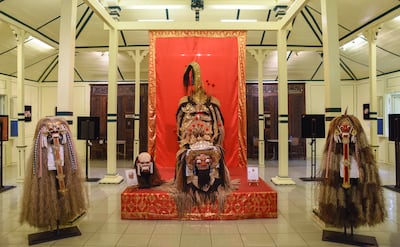
To connect with locals, and teach them about Islam, these saints adopted local artforms. Javanese lore suggests that one such form was wayang, which became a key tool for the Wali Songo to convert Indonesians to Islam. Rather than discarding the traditional Hindu tales of the shadow puppet theatre, they tweaked them.
The updated plays popularised in Java by these saints introduced many Muslim characters and themes. One historic Javanese tale suggested these impressive performances were often held inside mosques. If locals wished to watch the shadow puppets, they were required to first state an Islamic prayer.
Slowly, due to wayang’s new Islamic influences, many Indonesians became Muslim. The efforts of these nine saints have not been forgotten. Their tombs in East Java – spread across Tuban, Surabaya, Gresik and Lamongan – have become a site of pilgrimage.
Meanwhile, the shadow puppets they supposedly used to spread the good word of Islam continue to enchant crowds of tourists and locals from Jakarta to Bali. Regardless of its origins, or impact on Indonesia’s religion, Wayang remains proud and popular.
